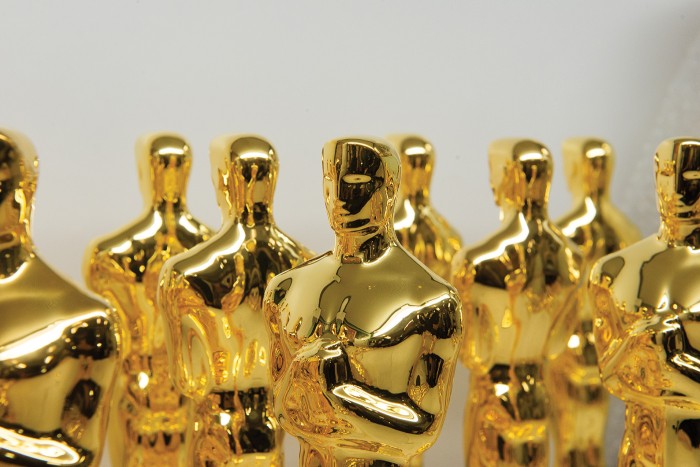
When the 89th annual Academy Awards are presented in February, the Oscar statuettes will have a particularly scientific shine, thanks to Richard Polich, SM ’65. Polich, who runs the fine-arts foundry Polich Tallix in upstate New York, used 3-D technology to replicate the original version of the coveted statuettes atop a modern base.
In 2015, Polich’s team began building this season’s statuettes by creating 3-D-printed forms based on digital scans of an original 1929 statue and a modern-era pedestal base. After using the forms to cast the statuettes in wax, they coated the wax statues in ceramic shells, which they cured and fired at 1,600 °F. In the process, the wax melted away, leaving empty Oscar-shaped forms. Next, the workers cast the statuettes in liquid bronze at more than 1,800 °F, cooled them, and sanded them to a mirrorlike smoothness. Then they electroplated the figures with 24-karat gold and applied black patina to their bases.
Polich, who earned his MIT degree in metallurgy and worked with Professor Merton Flemings ’51, SM ’52, ScD ’54, at the MIT Foundry, was chosen to re-create the Oscars because he had decades of successful experience with challenging fabrication projects. His work includes such massive sculptures as Jeff Koons’s gleaming stainless-steel Rabbit in 1986 and major public monuments including the Korean War Veterans Memorial in Washington, D.C., in 1995.
Polich Tallix artisans are returning to the original practice of casting in bronze after decades in which the Oscar statuettes were made from a pewter-like alloy. According to the academy, the process—from making individual wax models to polishing the bronzes—has restored subtle features of the original handcrafted statuette that sculptor George Stanley designed from sketches by MGM art director Cedric Gibbons, who himself won 11 Oscars. The statuette is still 13.5 inches tall, weighing in at 8.5 pounds.
Keep Reading
Most Popular
Large language models can do jaw-dropping things. But nobody knows exactly why.
And that's a problem. Figuring it out is one of the biggest scientific puzzles of our time and a crucial step towards controlling more powerful future models.
How scientists traced a mysterious covid case back to six toilets
When wastewater surveillance turns into a hunt for a single infected individual, the ethics get tricky.
The problem with plug-in hybrids? Their drivers.
Plug-in hybrids are often sold as a transition to EVs, but new data from Europe shows we’re still underestimating the emissions they produce.
Stay connected
Get the latest updates from
MIT Technology Review
Discover special offers, top stories, upcoming events, and more.